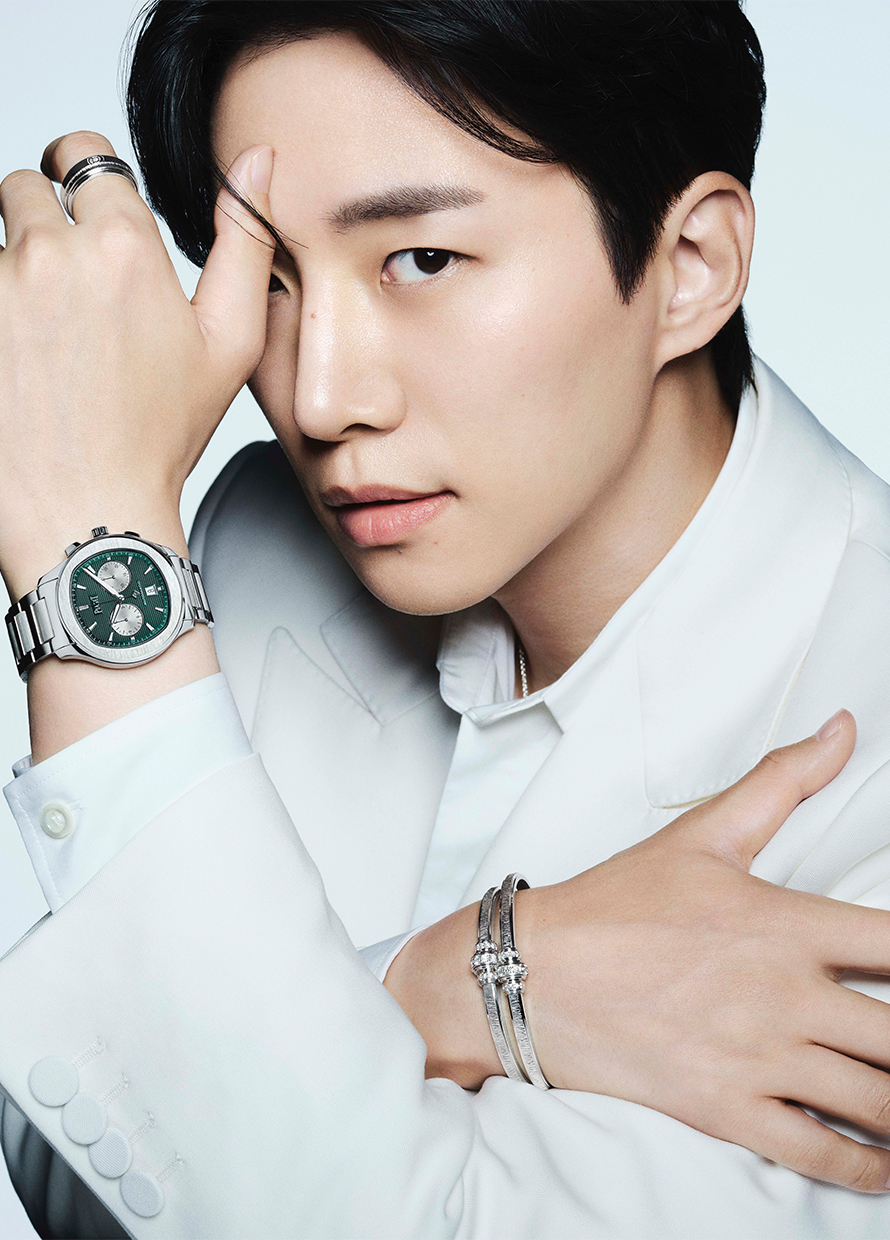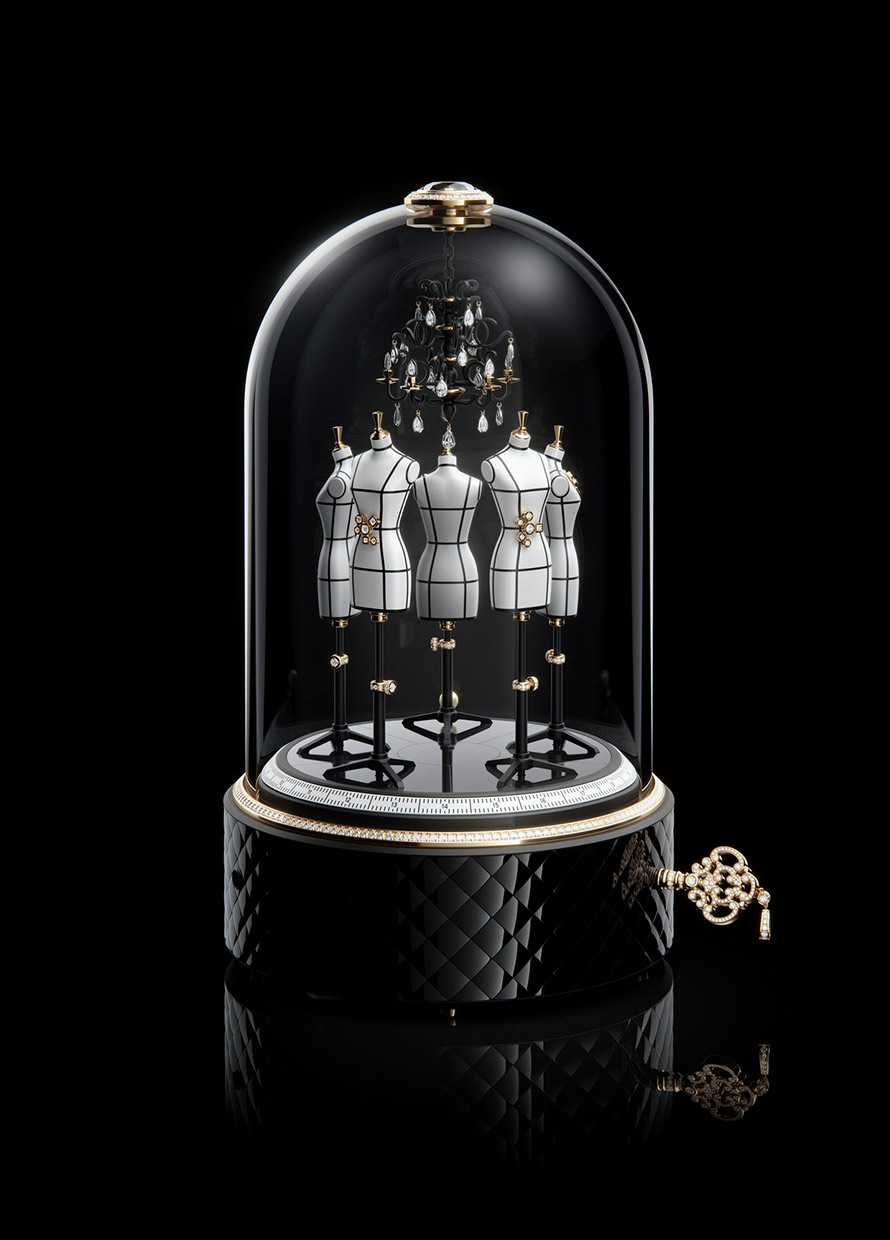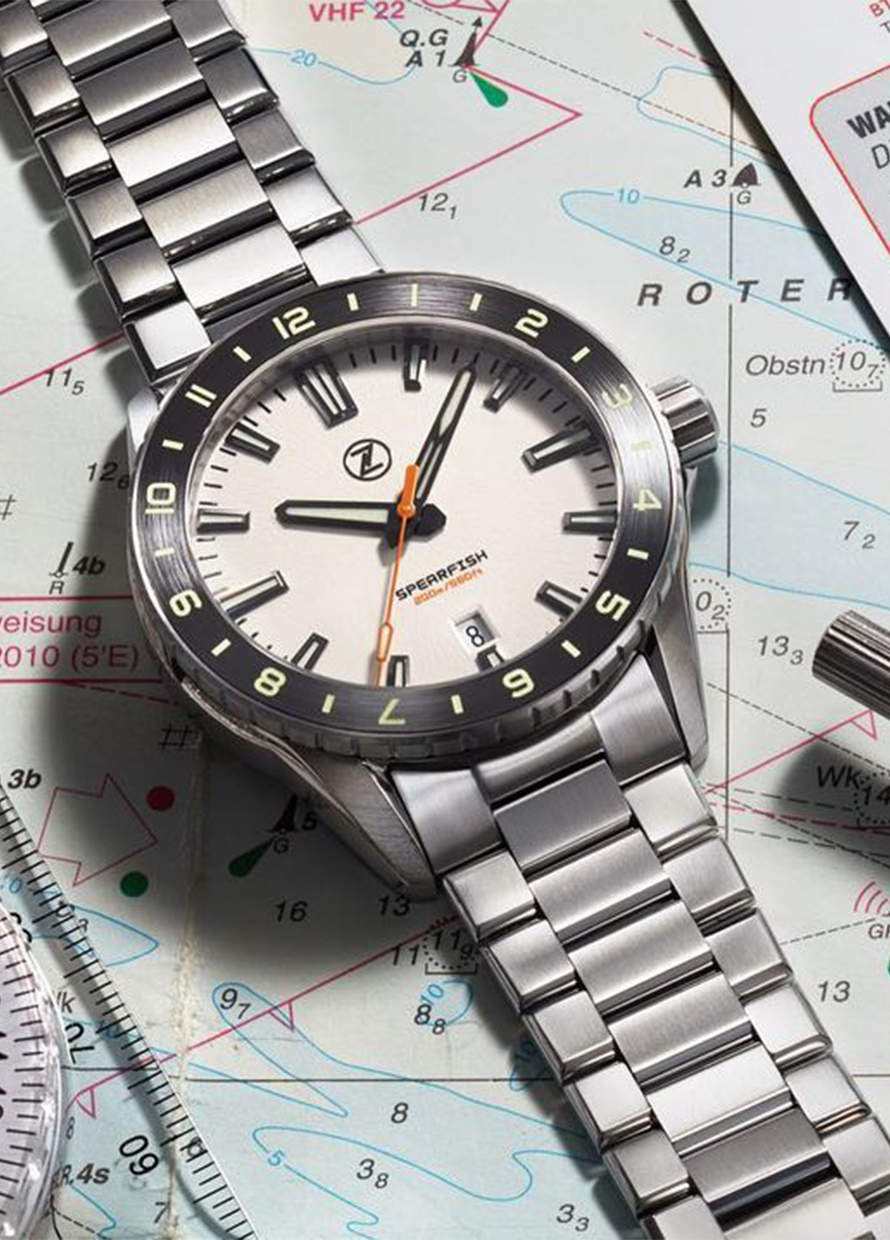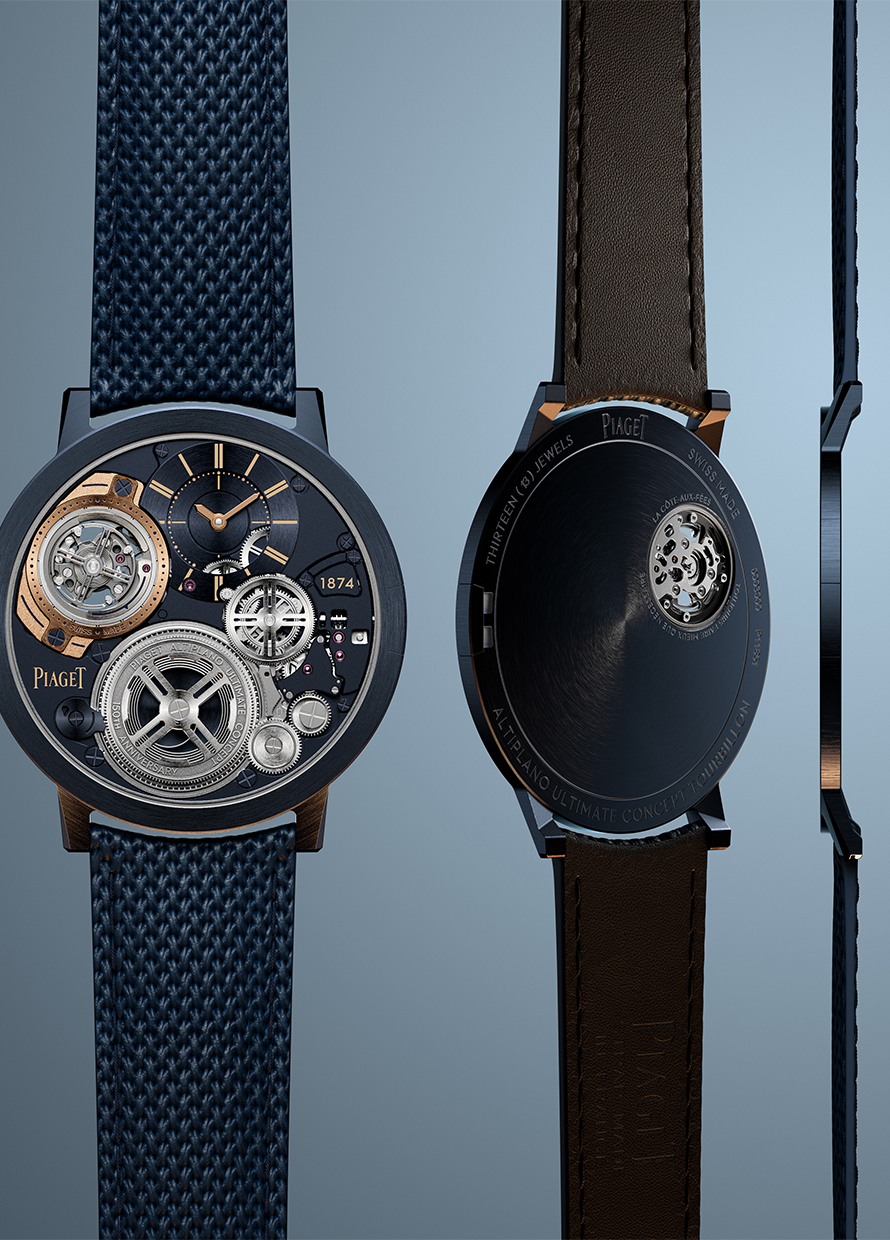Peter Speake-Marin delves into his friendship with Pierce Brosnan and challenges as a watchmaker
A true English artisan
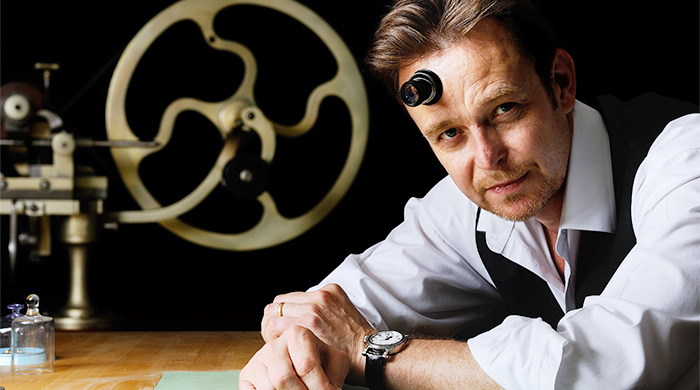
To say that Peter Speake-Marin is an experienced watchmaker would be an understatement—the founder of Speake-Marin and watch designer has had over 30 years of horological expeerience, having restored antique pieces from Breguet and Patek Philippe to serving as a consultant for companies including Harry Winston and Maîtres du Temps. We sat down to chat with the English craftsman during his stay here for the watch and jewellery showcase “A Journey Through Time 2015” at Starhill Gallery.
Tell us more about Pierce Brosnan being the ambassador of Speake-Marin.
The effects were very positive. The biggest challenge for little companies like us is being able to gain confidence in the marketplace because we haven’t been around for 100 years, and also for notoriety because we want people to know who we are. Pierce brings that level of confidence and comfort to the brand. We get more publicity because people love to see pictures and the association with us.
Two years ago, I was called by a director of this movie. And the character that Pierce was playing was an assassin but his day job was a watchmaker. So they wanted me to build a workshop, supply watches, and give any sort of counsel necessary. I set up the outside of the shop in London, and the inside of the boutique and workshop was created in Sofia, Bulgaria. It was very surreal and bizarre.
I met Pierce in Bulgaria, and in a conversation that didn’t last more than 20 minutes, we kind of got to know each other through very simple things. We kept coming up with parallels—I would say “I love watchmaking!” and his will be “I love making films!” We both come from different domains but are driven by the same thing, which is to do what we love. And we’re very fortunate to have made careers out of it but obviously, his is a whole different world than mine. He’d be wearing my watch in his everyday life and start taking pictures of him with the watch. This was even before we thought about having an agreement. And one day I called him to ask if he was interested to work on something together, and he made it achievable.
I’ve led an unsual life as a watchmaker and he was definitely one of the weird parts of it. I’ve sold watches to politicians, directors, and musicians etc. But his world kind of frightens the hell out of me. It’s so surreal. What happened in Sofia was that they spent several months building sets and in a few days it’s over! When I went back to the set to pick up all my material, it left me feeling a quiet tension, because it’s all over within a few minutes of filming. I found it unsettling from that point. There’s so much preparation to it, and it takes up to 24 hours of filming, which results in only 1 minute of material. It’s almost wasteful yet it’s not, because it’s art. It’s what I do, too.

How was shooting Pierce Brosnan like?
We went to New York to the Meatpacking District to this incredible vast studio with windows everywhere. Initially, he gave his best steamy look, like what you’d expect from Pierce Brosnan, but I wanted him to relax. And that’s where he came out with these pictures, and unfortunately even if I think it’s brilliant, it’d never be approved. We had two looks—one relaxed and another of him in a Hackett, sports-style look. My photographer normally spends the same amount of time to get a dozen good pictures from others, but we got five hundred! Pierce doesn’t want to see his pictures on the camera as he doesn’t want to be more self-aware of himself. And the results were incredible. We email each other from time to time, and when you get an email from Pierce Brosnan, you’re like “It’s very weird!” I’ve never been a stalker or movie star lover, but I kind of understand how that happens. Having seen this, I kind of get it now.

You were a watch consultant from Survivor, how was that experience like?
The very first time I had the connection with the film was when I was in London and we were building the outside of the set. They actually asked me to participate, just to walk pass a window of a boutique, down the street. And I actually forgot how to walk! I was so nervous, and it wasn’t even a nanosecond that I had appeared in the film in the end. When I watch the film finally, I was waiting for so much more and virtually nothing was kept in.
That was my experience, and it was interesting, although I would never want to be part of that world. But I respected that James McTeague was the director, he’s like the orchestra leader. They would take 30-40 times for one scene, and I was in awe at the way he managed it and he got input back from different people. The pragmatism of that guy in doing that job, I was in awe of. The creative process that was spontaneous in that moment in time, whether changing the light or position slightly—I was fascinated by it.
Is there a country or demographic that you are interested in targeting now?
There isn’t one target country. The two major markets are Asia and America, which is very sweeping. We sell watches all over the world but we’re only a small company so it’s impossible to imagine having a wide appeal. We don’t want to dilute ourselves, so we concentrate on two markets. And right now, we’ve been restructuring strategies for the future. We opened up in Paris recently, and most who buy it aren’t locals, they’re mostly tourists. The markets just seem to be generally more developed in America or in Asia.

What’s the biggest challenge you’ve faced so far?
I think that generally, the most challenging aspect of what I do isn’t the watchmaking or the commercial part of it. It’s the communication aspect, probably. The reason I’m able to do what I do is because of the Internet and photography. This is how we get to tens of thousands of people everyday. But it’s so momentary, it’s there for one second and then it’s gone. Every company, big or small, uses the same medium in one way or another. There’s a lot of material that goes out there.
The advantage that small companies have is that we may not have been around for as long as the rest have, but we have a human interest that they don’t, because we’re living, breathing people. We have the person and the product. The market is going in a direction of people. That’s why James Bond works—there’s a human aspect behind it. There’s so much product in the market that trying to develop a brand and grow isn’t a process that takes 1 to 10 years—it takes a lifetime. I think that’s the hardest thing, the communication and commercialisation of building a small brand in a challenging world now. Fortunately when you make 100 watches, it’s easier to sell them than making a hundred thousand watches.

How did the Shenandoah came about?
I get asked the question “When are you going to make a ladies watch?” a lot. Instead of taking an iconic case, shrink it, stick some diamonds on it and calling it a ladies watch, we did it differently. The Shenandoah is a Piccadilly but without the shoulders in place, it’s slightly curved. It retains the same DNA of my other watch, but it’s very much a ladies watch. It’s a very different piece to the men’s watches. It’s a totally different client at the end of the day, and design wise, there was a woman involved in designing the dials.
The hard thing for me as a watchmaker was the mechanics of it. We started out with a mechanical watch and we ended up with a quartz watch. And the reason for that (this might be a sweeping generalization) is because like men’s watches, women don’t like when they have to wind them up. And ladies have long nails. So we made a quartz watch, and everyone was like “Speake-Marin is selling out!” but we’re just addressing the clients. It came out early this year, and it’s well-received. It’s a jewellery-centered watch, not a fashion-orientated watch. The name also means something like “girl in the stars”—isn’t it lovely? That’s what marketing companies are for. I come up with things like “Spirit” and “Resilience”…it’s too masculine for this.
What’s next for Speake-Marin?
I’ve been doing this now seven years just at Speake-Marin, and it has changed multiple ways, whether it’s the different people I’m working with or where I’m traveling to. Today I think we’re at the point whereby what we are putting together will assure us of our stability in Malaysia. I’ve lived my dream already—to have ideas and execute them, to take that idea out of my head and put it on my hand. What I really want to do professionally is continue doing that. I don’t want to be a millionaire and I’m happy with what I do and have. It’s great to make unreachable dreams, but when you’re already there, it’s a nice place to be—almost Zen-like. There has to be growth, definitely. Businesses wither if they aren’t nurtured. The slow growth we have is comforting.
Related stories:
Speake-Marin’s latest masterpiece: The Kennin-ji Temple Masters Project
Exploring the emotion of timepieces with Romain Jerome CEO Manuel Emch
| SHARE THE STORY | |
| Explore More |
